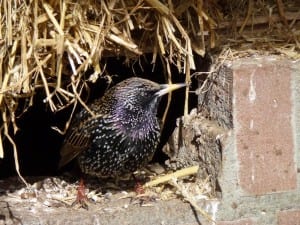
Consulting the best service partners available for bird removal NJ has to offer is your best bet in controlling unwanted pests. European Starlings are a common species of bird that can be found nearly anywhere, from Alaska to Mexico. They are about the size of a robin and each weight about 3.2 ounces. They are completely black during the summer and develop white spots during the winter. Both males and females have pale yellow beaks during the breeding season and dark beaks the rest of the time
Facts About European Starlings
Starlings can live in fields, woodlands, lawns, towns, farms, and cities. They prefer to nest in areas with trees with suitable nesting openings as well as grass areas where they can forage. In the winter months, they choose their habitats based on the availability of food and water, like most other species.
These birds were deliberately introduced to the United States from Europe in 1890 and 1891 by a Shakespeare enthusiast. He freed just 100 individuals in Central Park in New York. The 140 million birds now living in the United States are all descended from those original 100. In fact, Virginian starlings and Californian starlings are nearly genetically indistinguishable despite the 3,000 mile distance.
A female will lay 4 to 7 eggs in a clutch which hatch 11 to 13 days after the incubation period. At 21 days the chicks leave the nest. The parents share the workload with both of them feeding the young, incubating the eggs, and building the nest.
Starlings are not solitary birds–they live in flocks which roost together in tree groves. They deliberately choose trees that have sufficient perches for the whole flock, and when they move into denser vegetation or structures for the winter they move as a flock.
Because of the various problems that they cause, starlings are often considered pests. These birds can transfer disease between livestock facilities through their feces, where transmissible gastroenteritis virus (TGE), a fairly serious disease, can be found. Starlings will also eat cultivated fruit and raid seeds from recently planted fields. As their droppings accumulate they can pose safety hazards and corrode surfaces because of their acidity. Starlings can get sucked into aircraft engines if they roost near airports. They can also pass another disease, histoplasmosis. Histoplasmosis is a fungal respiratory disease that grows under the roots. It can cause blindness or even death.
Precise Pest Control Service for Bird Removal; NJ -Bound European Starlings
Precise pest control service can assist you with bird removal. NJ is home to many bird species. Although the European Starlings are generally not protected by law in the state of New Jersey, there are a few states which do offer some level of environmental protection for them. Precise Pest Control services offers superior bird removal NJ has to offer.
There are a few things that you can do yourself to help prevent starlings from moving into your property, such as closing off openings larger than one inch with netting or hardware-cloth. Also, if there are no food or water sources for the starlings, they will not want to roost near or in your home.
However, these measures will not help very much if the starlings are already present. In that case, your best bet is to hire the best bird removal NJ has to offer, Precise Pest Control. Contact us online for your free inspection today or call us at (866) 971-2847. Learn more about other types of birds that are pests and can cause damage to your home here.





